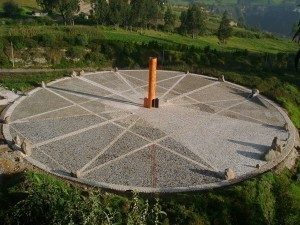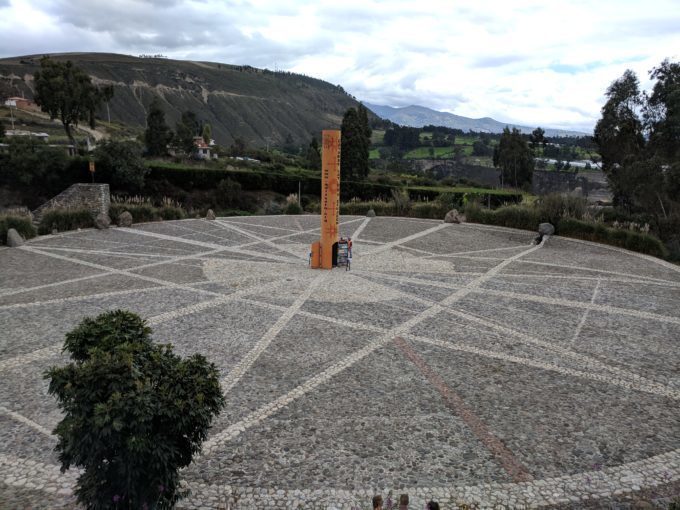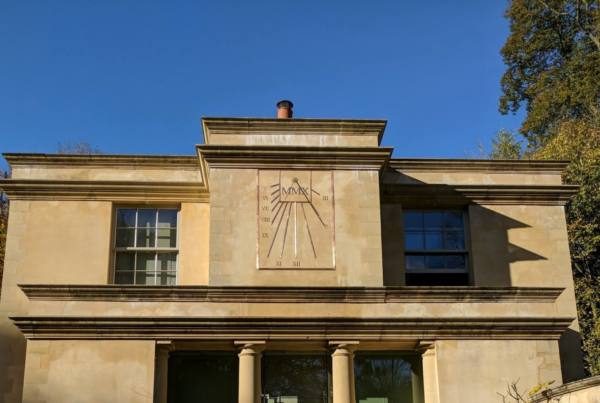
The Quitsato Sundial is a spectacular design located at La Mitad Del Mundo (Middle of the World), 47 km North of Quito, in Ecuador. It is the only place where the Equator passes through a glacier, and is also at 8,130 feet it is the highest point of Equator. The sundial occupies an area of 2300m² and was built in 2006.
Striking in its appearance, the design consists of a circular platform, 54m in diameter, which forms a mosaic of light and dark pebbles. The mosaic draws an eight-pointed star that indicates the solstices and equinoxes. Intermediate lines pointing to the cardinal directions have also been included and the Equator line is drawn by using smaller, darker pebbles between two metal plates.
Close by is the Monumento a la Mitad del Mundo (Monument to the middle of the World). This monument was originally thought to be on the equator, and was built by the geographer Luis Tufiño in 1936 on the site calculated by the eighteenth century Franco-Spanish Geodesic Mission which fixed its approximate location. However modern techniques have shown it to be about 250m from the equator.
The Quitsato Sundial is located exactly on the Equator (calculated to an accuracy of 1mm using GPS measurements). Because of its design, the shadows projected by the gnomon on the dial lines can indicate solstices, equinoxes, and months of the year with great precision.
The colour difference between the stones serves another purpose. Apart from showing equinox and solstice lines, it is designed to reference albedo – the reflectivity of a surface – and its use in astronomical study.
At 10m high and 1.3m in diameter, an orange cylindrical tube acts as the gnomon in the centre of the design, indicating the hours and months of the year on the platform, with it’s shadow cast by the Sun. The gnomon is 10 meters high in reference to the metric system, which is based on the original estimate of the circumference of the Earth at 40 million meters.




